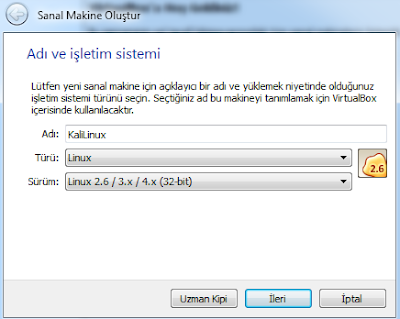
From the main screen, right click on the newly created virtual machine “kali linux” and select “Settings.”. From the “File location and size” window, set the virtual machine drive size to 12 GB and click create. From the “Storage on physical drive”, keep the default option which is “dynamic allocated” and click next.ħ. Now you need to select a hard drive file type. Default size is 8 GB, but I recommend to keep it to more than 10 GB. From the next screen, you can either create a new virtual hard drive or use existing virtual drive. Select the memory size from the screen and click Next. Change version to Linux 2.6/3.x (64 bit) If you are installing 64 bit version of Kali linux. Enter the name “Kali Linux”, type and version was auto populated. Click on New to create a new virtual machine.Ģ. Steps:ġ. After installing virtualbox, open it. In this article, I am using latest version 4.3.6 of virtualbox. Kali Linux can be downloaded from here and VirtualBox can be downloaded from here. VirtualBox is an open source general-purpose full virtualizer for x86 hardware, targeted at server, desktop and embedded use. In this article, let’s see how to install Kali Linux 1.0.6 in Virtual Box. If you’re installing Ubuntu or Ubuntu-based distros, we’d recommend selecting at least 4GB of RAM. Then, click “Next.Virtualization is great way to deal with multiple operating systems on a machine.

For example, choose Ubuntu for an Ubuntu-based distro like Pop!_OS or Linux Mint.Īllocate the RAM using the slider or enter the value in the text box.

If your distro isn’t listed, choose the closest distro, or the one it’s based on. RELATED: The Best Linux Distributions for BeginnersĮnter a name for your Virtual Machine, choose a location you want to save it in, change the type to “Linux”, and set the version to the distro you’re using. If you haven’t already, choose a distro and start downloading the ISO so that it’s ready by the time we reach the step where we load it into the VM.


The steps for installing Linux in VirtualBox are pretty much the same on Windows, Linux, and macOS. Ubuntu Linux: Which Distro Should You Choose? Installing Linux in VirtualBox If you’re stuck, learn how to install a DEB file and an RPM file in Linux. Download the relevant package and double-click on it to install VirtualBox. Ubuntu and Debian use DEB files, whereas Fedora, OpenSUSE, RedHat Enterprise Linux, and CentOS use RPM files.


 0 kommentar(er)
0 kommentar(er)
